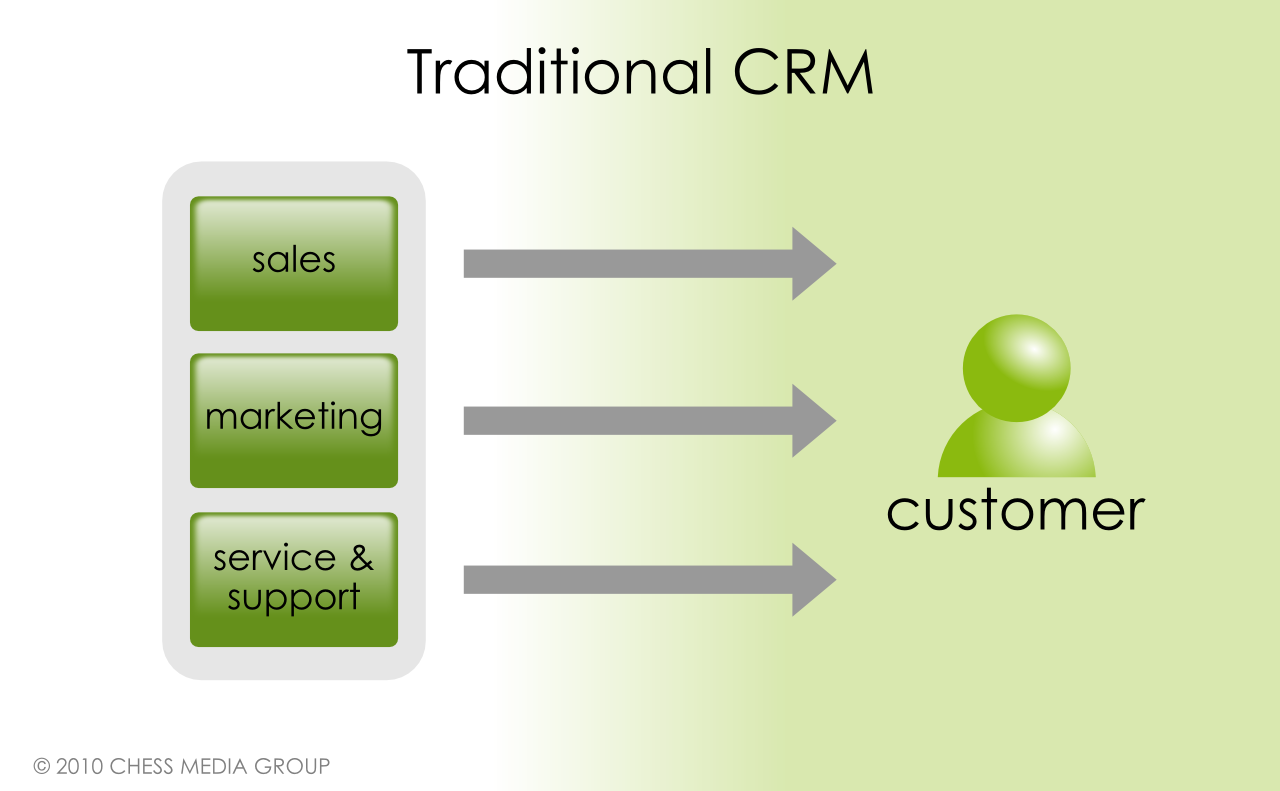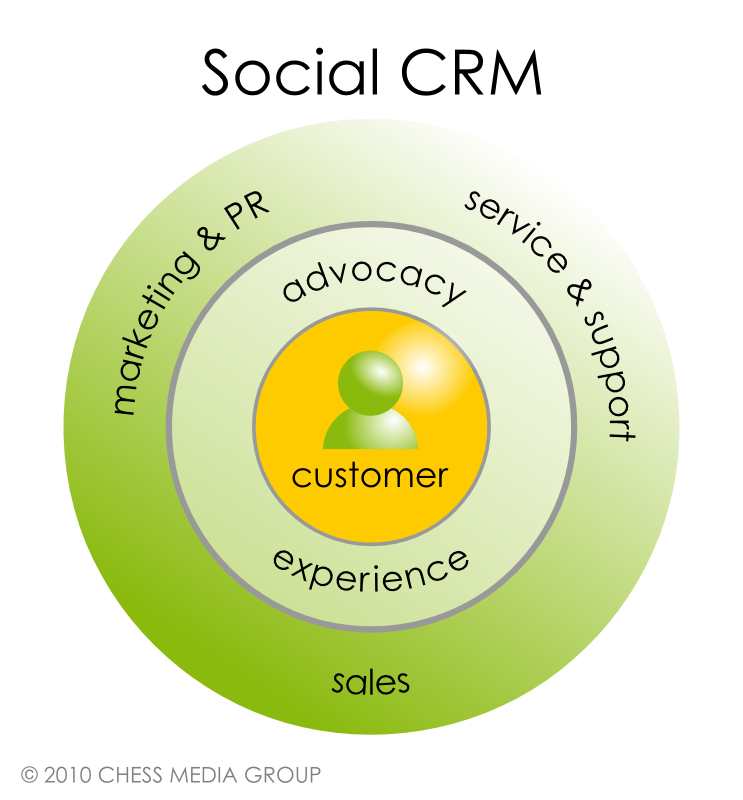This is going to be the first post in a series of posts that designed to help you visually break down and understand SCRM. This first post breaks down the difference between CRM and SCRM so that people can get an understanding of what we’re talking about conceptually. The images and the concepts here are expounded upon further in a whitepaper that Chess Media Group released in collaboration with Mitch Lieberman called The Guide to Understanding Social CRM and can be downloaded for free.
Let’s start off with CRM

From the above image you can see that CRM is focused around three areas: sales, marketing, and service/support. CRM is a linear approach to managing a customer through a process that essentially keeps them buying more stuff from your organization. A collaborative relationship here does not exist as evidenced by the uni-directional arrows. Instead, organizations manage customers based on data and information that they collect over time in an attempt to get to “know” their customers. CRM is an inside-out approach meaning that a team within an organization gets together to decide what to make, how to make it, and how to market it, and then pushes everything out to the customer. However, as we mentioned in our whitepaper, the challenge is that customers now talk back in a very public way and these customers have a lot to say and a lot to contribute. This means that a linear approach to managing a customer is no longer effective and efficient.
What is the alternative?

When compared with CRM diagram above we can see that there are a few differences. First of all PR is now a part of Social CRM (presentation). The reason for this is that sales and support issues are now PR issues if they are made public (such as with a blog post or with a tweet). In the presentation I just referenced you will also see that a quote I took from a recent PR study done at USC which shows that organizations are placing a considerable amount of authority and budgetary control of social media in the hands of their PR departments (more than any other department). Therefore PR must be included. Next we can see that the customer is actually a part of SCRM and that advocacy and experience are at center stage revolving around the customer. You will also notice that the traditional CRM components are still there (sales, marketing, support) and that’s because SCRM doesn’t replace what CRM is or does but it does evolve HOW it is done. The key difference is that the functions mentioned above are now done with the customer and not “to” the customer.
Let’s start with this and see if the visuals and concepts make sense. If you want more detailed explanations you can download The Guide to Understanding Social CRM.

Pingback: The Evolution of CRM to Social CRM
Just found your site and very happy I did. Thanks for the great stuff! In your opinion, and other than enterprise level solutions, has any existing vendor come even close to meeting your vision for a true Social CRM that is affordable, simple, and scalable?
Thanks!
Craig
Thanks for the kind words Craig.
It's tough to say really, I think a lot of what we are seeing especially for mid/small biz are vendors that offer business management tools that integrate pretty much everything i.e. Bantam Live. I don't think there is going to be such thing as a SCRM suite, depends on the problem you are looking to solve
Well , the view of the passage is totally correct ,your details is really reasonable and you guy give us valuable informative post, I totally agree the standpoint of upstairs. I often surfing on this forum when I m free and I find there are new balance 999 so much good information we can learn in this forum!
Pingback: The Action, Reaction, Management, Process (ARM) for Social CRM
Interesting white paper. Thanks for sharing.
There's a huge gap between CRM and SCRM, and that gap is mainly due to the traditional use of CRM tools and techniques for B2B interactions. The consumer-facing businesses that are listening and engaging people on social networks do not think of their consumer contacts in the same light; in fact, if they are not focused on transactions (via e-commerce, for instance), their customer “database” could be a series of campaign-related email lists.
All the activities you highlight, and the manner in which you highlight them (with the consumer in the middle of those activities) are spot-on. But I argue that approaching B2C companies with SCRM is not going to drive market adoption; solutions that address specific problems (monetizing social marketing for one) will be the driving force behind adopting a “consumer” driven database, whatever you might call it.